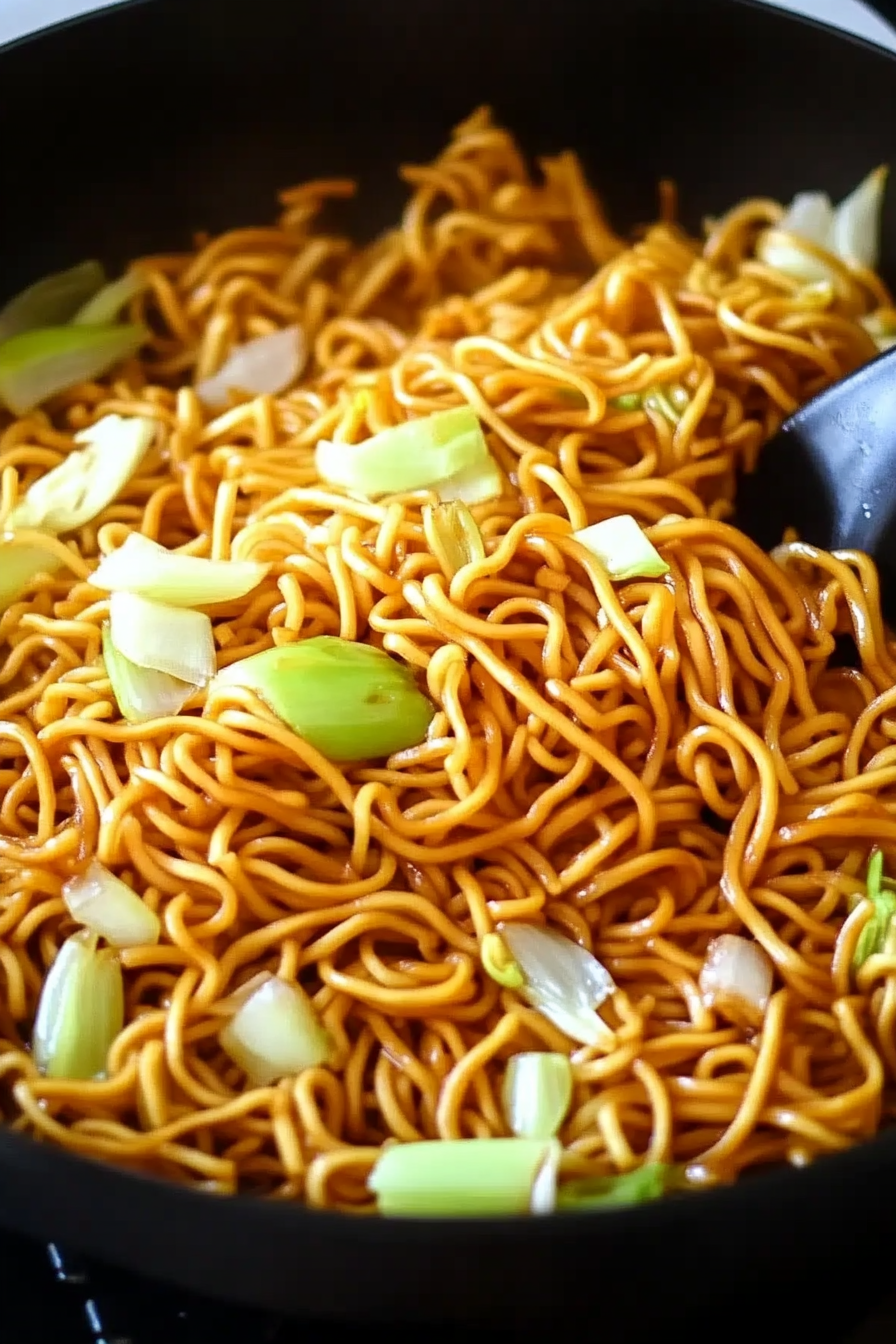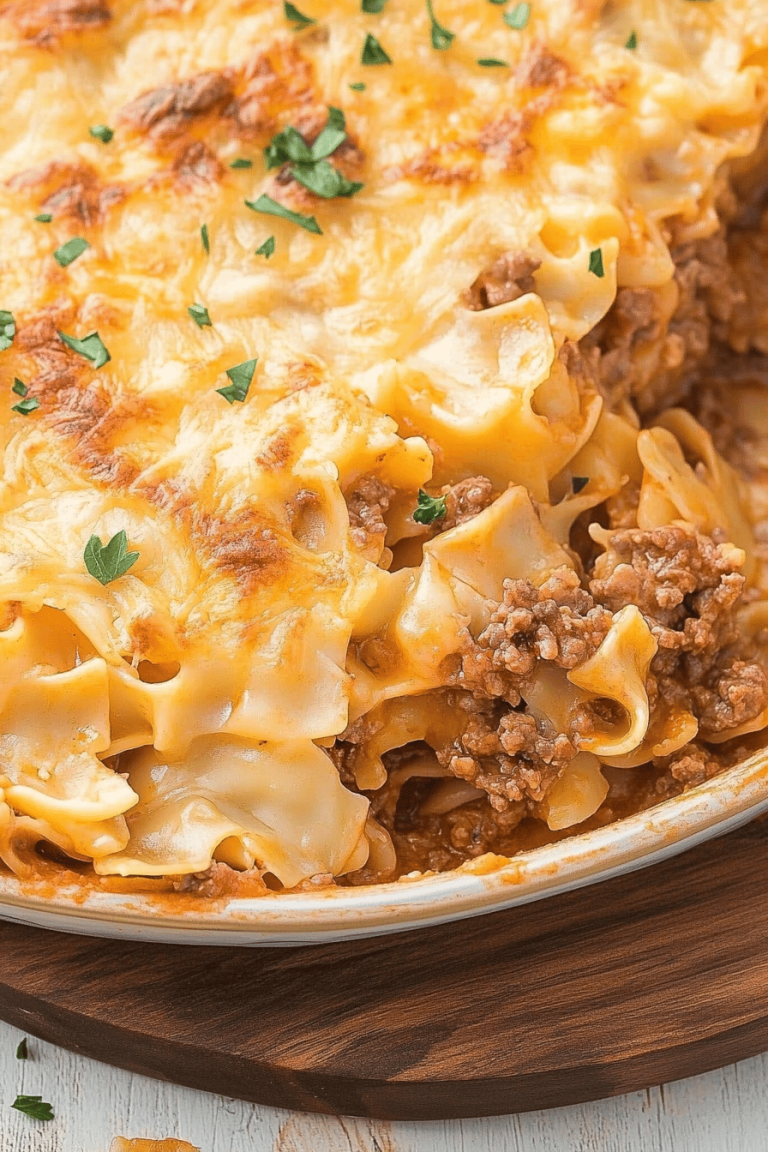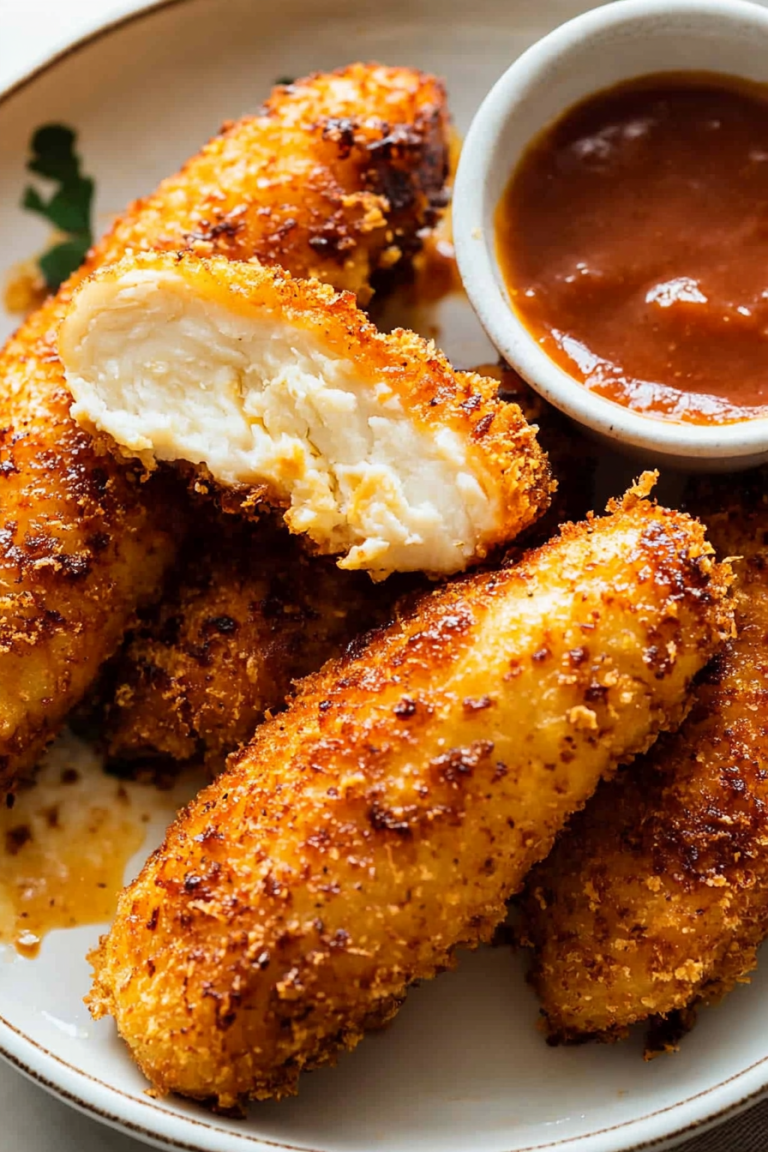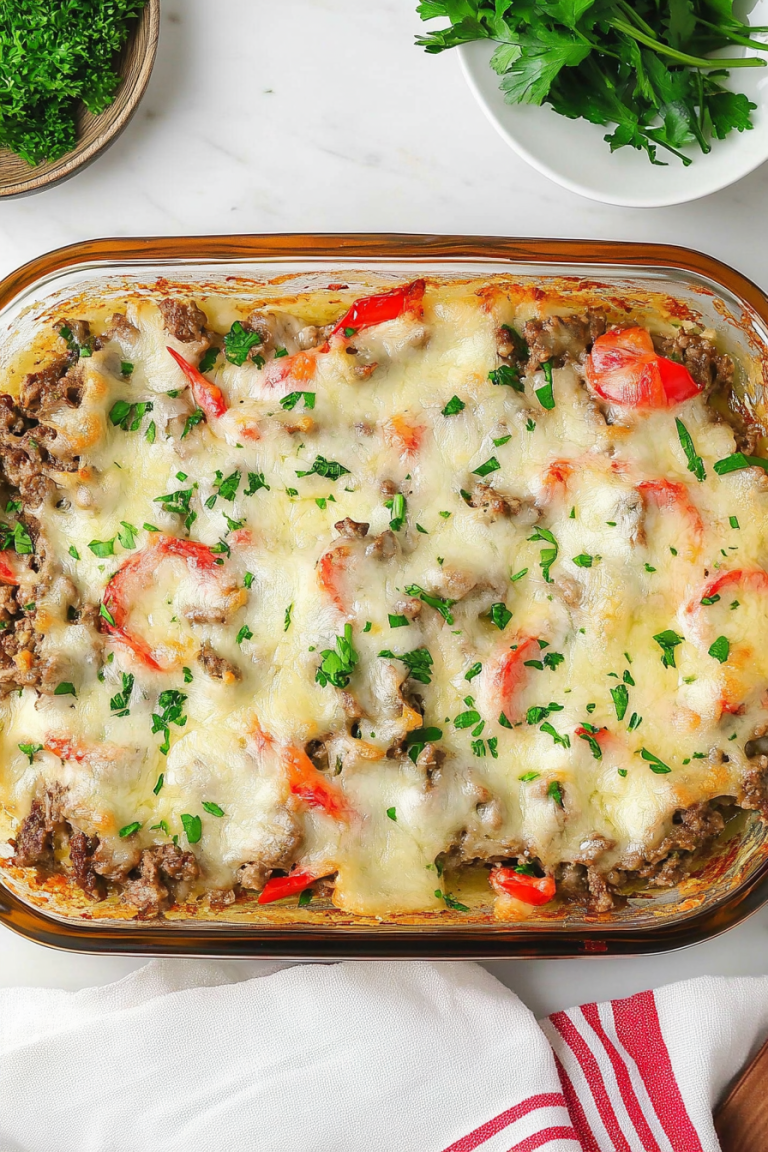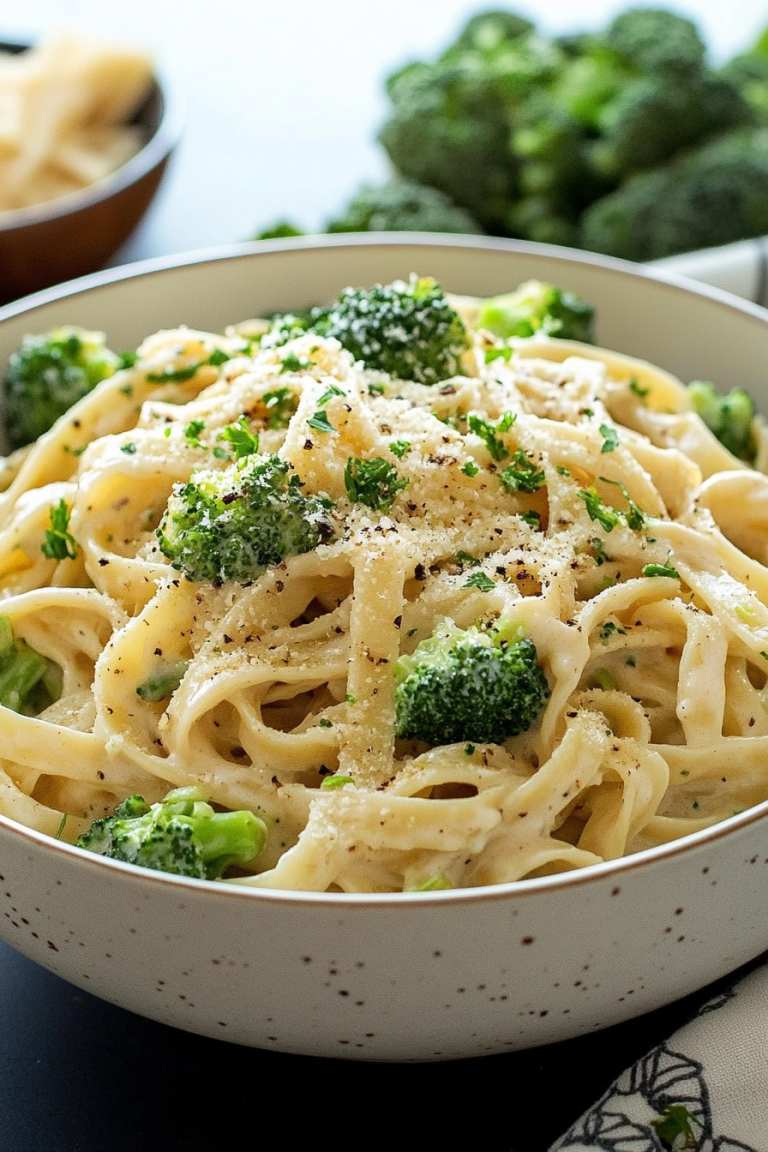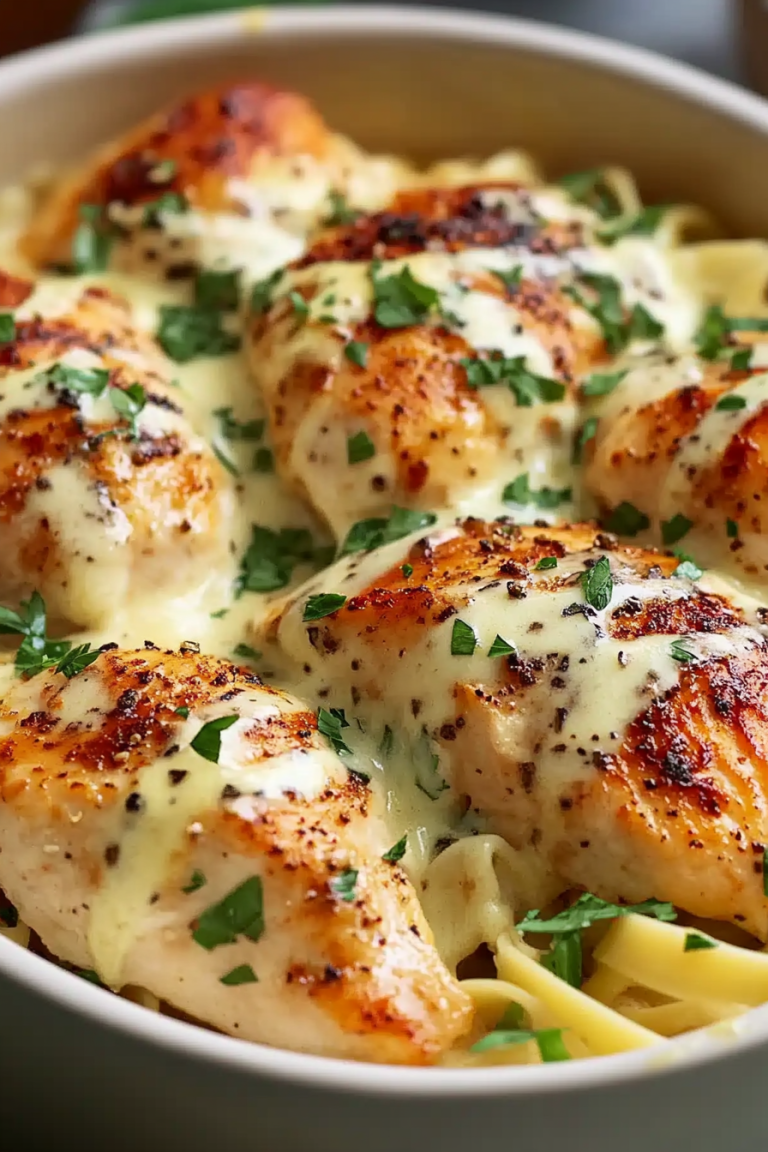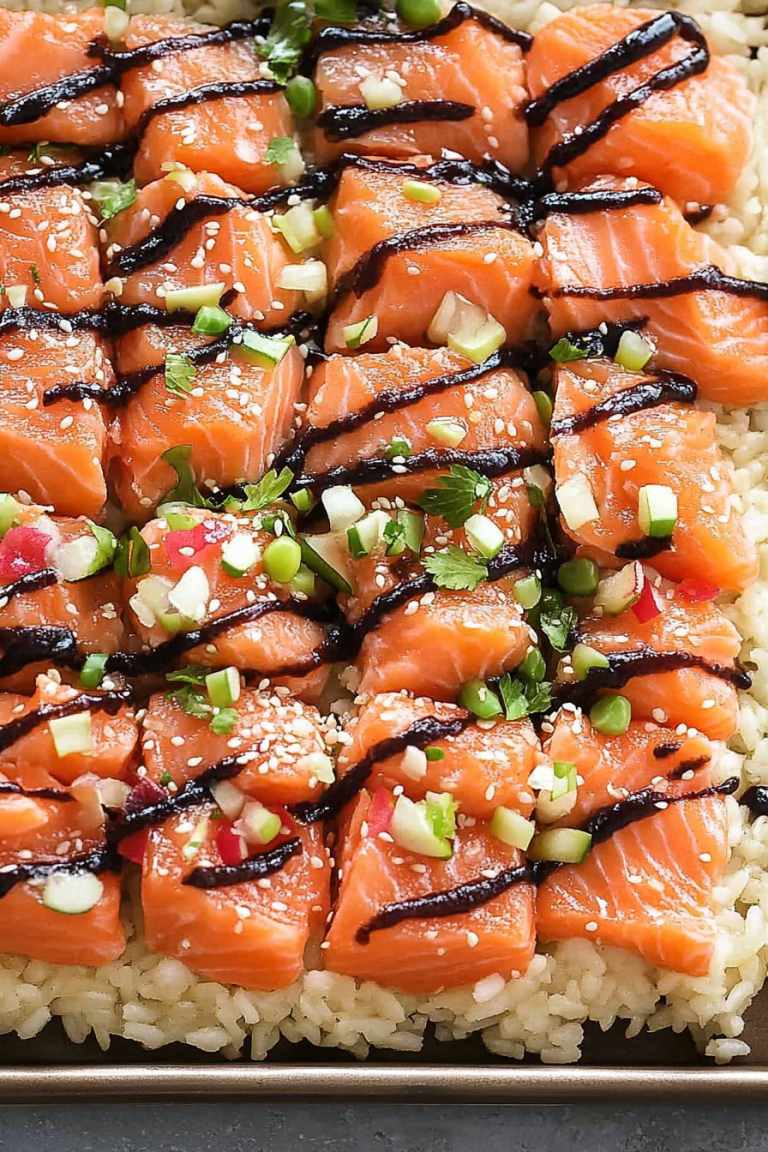Okay, confession time. There are some days when only takeout will do, right? And for me, growing up, that almost always meant a trip to Panda Express. The bright orange chicken, the delicious fried rice, and of course, their signature chow mein. Oh, that chow mein! It was always the perfect balance of savory, slightly sweet, with those delightful chewy noodles and crisp veggies. I’ve spent years trying to recreate that magic in my own kitchen, and I’m so excited to finally share my absolute go-to Panda Express Chow Mein Recipe with you. This one’s a real lifesaver on busy nights when you want something satisfying and familiar without a huge fuss. It’s got that comforting, takeout vibe, but made with ingredients you know and love, right in your own home. Forget the delivery apps, this homemade version is even better, trust me!
What is Panda Express Chow Mein?
So, what exactly is this dish we’re talking about? Think of it as a classic American-Chinese stir-fried noodle dish. It’s not exactly authentic to traditional Chinese cuisine, but it’s a beloved adaptation that’s found its way into the hearts (and stomachs!) of millions. At its core, it’s stir-fried noodles, usually a medium-thick egg noodle, tossed with a medley of crisp vegetables like cabbage, carrots, and celery, all coated in a savory, slightly sweet sauce. Panda Express does their version with a very specific flavor profile – that unmistakable umami depth that keeps you coming back for more. It’s a dish that’s both simple and incredibly satisfying, and honestly, it’s become a staple in my home for a good reason. It’s the kind of comfort food that just hits the spot every single time.
Why you’ll love this recipe?
What are some of the best reasons to make Panda Express Chow Mein?flavor is just spot on. I’ve tinkered with the sauce for ages to get that perfect balance of soy sauce, oyster sauce, and a hint of sweetness that’s so characteristic of the original. It’s savory, it’s got depth, and it’s utterly addictive. Then there’s the simplicity. Honestly, once you have all your ingredients prepped (that’s the key, folks!), this comes together in a flash. It’s perfect for those nights when you’re rushing but still want a home-cooked meal that feels like a treat. And speaking of treats, it’s incredibly cost-efficient! When you compare the cost of making this at home versus ordering takeout, you’ll be amazed at how much you save. All the ingredients are readily available at your local grocery store, and you get a huge batch for a fraction of the price. Finally, the versatility! While this recipe is designed to mimic the classic Panda Express style, you can totally play around with it. Add in some shredded chicken, beef, or tofu for a more complete meal, or throw in other veggies you have on hand. It’s also surprisingly great for leftovers, though I can’t promise there will be any! What I love most about this is that it’s a guaranteed crowd-pleaser. My kids devour it, my husband asks for it regularly, and it’s always a hit when I make it for friends. It’s that comforting, familiar taste that just makes everyone happy.
How do I make Panda Express Chow Mein?
Quick Overview
Making this Panda Express Chow Mein at home is surprisingly straightforward. The entire process really boils down to two main parts: getting your noodles and veggies perfectly stir-fried, and then tossing everything in that glorious, homemade sauce. We’ll cook the noodles until they’re just right – tender but still with a bit of chew – and then give them a quick rinse to stop the cooking. While those are resting, we’ll get our veggies nice and crisp-tender in a hot wok or skillet. The real magic happens when we combine everything with the sauce. It coats every strand of noodle and every piece of vegetable, creating that delicious, slurpy goodness you crave. It’s a speedy process that delivers maximum flavor.
Ingredients
For the Noodles:
This is where you want to grab some good quality Chinese egg noodles. Look for the dried ones that are typically around 1/8 to 1/4 inch thick. They have the best texture for this dish. You’ll need about 12-16 ounces, depending on how noodle-heavy you like your chow mein. Avoid overcooking them; we want them to have a slight bite! I usually aim for about 2 minutes less than the package directions, as they’ll continue to cook a bit in the wok.
For the Stir-Fry Veggies:
Here’s where we get that lovely crunch and color! You’ll want about 2 cups of thinly sliced green cabbage, 1 cup of julienned carrots, and 1 cup of thinly sliced celery. These are the classic trio. You can also add a chopped yellow onion or some sliced mushrooms if you like! Make sure everything is cut relatively uniformly so it cooks evenly. A little pre-chopped coleslaw mix can be a lifesaver here if you’re really short on time, though I find fresh veggies have the best crispness.
For the Savory Sauce:
This is the heart of the flavor! You’ll need:
– 1/4 cup low-sodium soy sauce (use regular if you don’t mind it saltier)
– 2 tablespoons oyster sauce (this is key for that umami depth!)
– 1 tablespoon dark soy sauce (for color and a richer flavor)
– 1 tablespoon Shaoxing wine (or dry sherry if you can’t find it; it adds a wonderful depth)
– 1 teaspoon sugar (or a little more to taste)
– 1 teaspoon sesame oil (for that signature nutty aroma)
– 1/4 teaspoon white pepper (optional, but it adds a nice zing!)
– 1/4 cup chicken broth or water
For Cooking:
– 2-3 tablespoons vegetable oil or other high-heat cooking oil
Step-by-Step Instructions
Step 1: Cook the Noodles
Get a large pot of water boiling, and generously salt it. Add your dried egg noodles and cook according to package directions, but aim to undercook them slightly – they should still have a good bite. Usually, this is around 5-7 minutes. Once they’re al dente, drain them immediately in a colander. Rinse them under cool running water for a minute or two. This stops the cooking process and helps prevent them from sticking together. Give them a good shake to drain as much water as possible. You can toss them with a tiny drizzle of sesame oil to keep them from clumping if you like.
Step 2: Prep the Veggies
While the noodles are cooking or draining, make sure all your vegetables are prepped and ready to go. You want the cabbage thinly sliced, the carrots julienned (cut into thin matchsticks), and the celery sliced on the bias (diagonally). If you’re using onion, slice it thinly. Having everything ready is crucial for stir-frying, as things move quickly!
Step 3: Whisk Together the Sauce
In a small bowl, whisk together all the sauce ingredients: low-sodium soy sauce, oyster sauce, dark soy sauce, Shaoxing wine (or sherry), sugar, sesame oil, white pepper (if using), and chicken broth or water. Make sure the sugar is dissolved. Set this aside. This is your flavor bomb!
Step 4: Stir-Fry the Aromatics and Veggies
Heat your wok or a large, heavy-bottomed skillet over high heat until it’s smoking slightly. Add 2 tablespoons of vegetable oil. Swirl it around. Add your sliced onion (if using) and stir-fry for about 30 seconds until fragrant. Then, add the cabbage, carrots, and celery. Stir-fry vigorously for about 3-5 minutes, until the vegetables are crisp-tender – you still want them to have a nice bite to them, not be mushy. Don’t overcrowd the pan; if necessary, cook in batches.
Step 5: Add Noodles and Sauce
Push the vegetables to the sides of the wok, creating a well in the center. If the pan looks dry, add another tablespoon of oil. Add the cooked and drained noodles to the center. Pour the prepared sauce evenly over the noodles and vegetables. Toss everything together quickly and continuously for about 2-3 minutes, until the noodles are coated in the sauce and heated through. The sauce will thicken slightly as it cooks and coats everything beautifully. Make sure to scrape the bottom of the pan to get all those delicious bits!
Step 6: Serve Immediately
Once everything is well combined and coated in that glossy sauce, it’s time to serve! Ladle the chow mein into bowls immediately. It’s best enjoyed piping hot, right off the stove.
Step 7: Garnish (Optional but Recommended!)
For an extra touch, you can sprinkle some chopped green onions or a few toasted sesame seeds over the top before serving. It adds a nice pop of color and freshness.
What to Serve It With
This Panda Express Chow Mein Recipe is fantastic on its own, but it can also be the perfect companion to a variety of other dishes. If you’re having a full-on Chinese-inspired feast, I absolutely love serving it alongside my Crispy Orange Chicken or my General Tso’s Chicken. The sweetness of those dishes contrasts beautifully with the savory noodles. For a lighter meal, it pairs wonderfully with steamed broccoli or a simple cucumber salad with a sesame-ginger dressing. If you’re going for a more Americanized comfort food vibe, it’s even good next to some sweet and sour pork! My family also loves it as part of a “build-your-own bowl” night, where we have a few different protein options and veggies, and everyone can customize their own plate. For breakfast, believe it or not, a small portion of leftover chow mein reheated with a fried egg on top is surprisingly satisfying! It’s just that kind of versatile dish that fits into almost any meal plan.
Top Tips for Perfecting Your Panda Express Chow Mein
Over the years, I’ve picked up a few tricks that really elevate this Panda Express Chow Mein Recipe from good to absolutely phenomenal. First, when it comes to the noodles, resist the urge to overcook them initially! They’re going to get cooked further in the wok, and mushy noodles are the enemy of good chow mein. I always aim for that perfect al dente bite right out of the pot. Also, rinsing them under cold water is non-negotiable for preventing a sticky, clumpy mess. For the veggies, the key is high heat and quick cooking. You want them to be tender but still have a pleasant crunch. Don’t be afraid of a hot wok; that’s what gives you that lovely char and prevents the veggies from steaming. If your pan isn’t big enough to cook everything at once without crowding, do it in batches! It makes all the difference. When it comes to the sauce, taste and adjust! This is your chance to make it truly yours. If you prefer it sweeter, add a touch more sugar. If you want it saltier, a bit more soy sauce. The oyster sauce is pretty essential for that authentic flavor, so try not to skip it if you can help it. For ingredient swaps, if you can’t find Shaoxing wine, dry sherry is a good substitute, and if you’re out of cabbage, Napa cabbage works too, though it will be a bit softer. For baking tips, well, there’s no baking here, but for stir-frying, make sure your heat is high! This is crucial for that wok hei flavor. And finally, for glaze variations – oh wait, that’s for a different recipe! For chow mein, the “glaze” is just the sauce. But if you ever want to add a little extra something, a tiny drizzle of chili oil at the end can add a nice kick. My biggest lesson learned? Prep everything before you even turn on the stove. Stir-frying is fast, and you don’t want to be chopping an onion while your noodles are burning!
Storing and Reheating Tips
This Panda Express Chow Mein Recipe is notoriously good as leftovers, though it rarely lasts long in my house! If you do find yourself with some delicious remnants, proper storage is key. For room temperature storage, I wouldn’t leave it out for more than two hours, especially if it’s warm where you are. It’s best to get it into an airtight container and into the fridge fairly quickly to maintain freshness. For refrigerator storage, make sure it’s in a sealed container. It will keep well in the fridge for about 3-4 days. The noodles might absorb a little more sauce and become softer, but the flavor is still fantastic. I’ve tried freezing this, and while it’s not *quite* as good as fresh, it’s still a decent option if you’re meal prepping. For freezer instructions, let the chow mein cool completely, then transfer it to a freezer-safe airtight container or a heavy-duty freezer bag. It should last for about 1-2 months. When you’re ready to thaw, it’s best to do it in the refrigerator overnight. For reheating, the best method is usually on the stovetop. You can add a splash of water or chicken broth to the pan and stir-fry the chow mein over medium heat until heated through. This helps revive the noodles and prevent them from drying out. Microwaving works too, but it can sometimes make the noodles a bit chewier or softer than you’d like. If the sauce seems a bit dry after reheating, you can always whisk up a quick extra bit of sauce (soy sauce, a little sugar, a splash of water) and toss it in. The key is to reheat it gently to bring back that wonderful flavor and texture.
Frequently Asked Questions
Final Thoughts
So there you have it, my friends! My tried-and-true Panda Express Chow Mein Recipe. I really hope you give this a try. It’s one of those dishes that brings back so many happy memories for me, and I’m so glad I can share it with you. It’s proof that you don’t need to spend a fortune or wait ages for delivery to enjoy that amazing Chinese takeout flavor. It’s easy, it’s satisfying, and it truly tastes like the real deal, if not better! If you love this recipe, you might also want to check out my recipe for Crispy Garlic Noodles or my Easy Fried Rice. They’re all part of that delicious, comforting Asian-inspired meal rotation we all love. I can’t wait to hear how your Panda Express Chow Mein turns out! Please leave a comment below and let me know what you think, or share any variations you tried. Happy cooking!
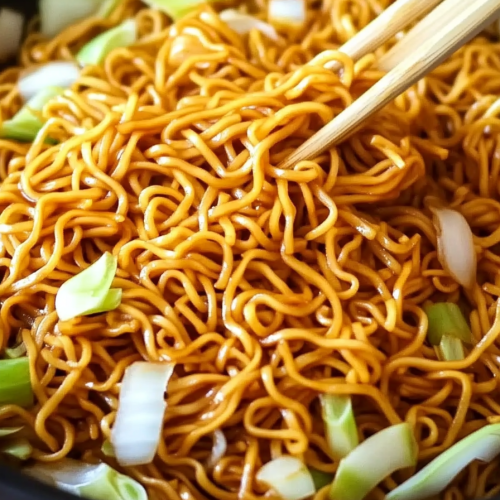
Panda Express Chow Mein Recipe
Ingredients
Main Ingredients
- 0.5 pound Chow mein noodles
- 0.5 pound Chicken breast thinly sliced
- 2 tablespoon Soy sauce for chicken marinade
- 1 tablespoon Sesame oil for chicken marinade
- 3 tablespoon Vegetable oil divided
- 0.5 cup Celery chopped
- 0.5 cup Carrots julienned
- 0.5 cup Onion sliced
- 1 cup Cabbage shredded
- 2 cloves Garlic minced
- 0.5 teaspoon Ginger minced
Sauce Ingredients
- 0.25 cup Soy sauce
- 2 tablespoon Oyster sauce
- 1 tablespoon Sesame oil
- 0.125 cup Chicken broth
- 1 teaspoon Cornstarch
Instructions
Preparation Steps
- In a bowl, combine sliced chicken breast with 2 tablespoons of soy sauce and 1 tablespoon of sesame oil. Let it marinate for at least 15 minutes.
- Cook chow mein noodles according to package directions. Drain and toss with 1 tablespoon of vegetable oil to prevent sticking.
- In a small bowl, whisk together all the sauce ingredients: soy sauce, oyster sauce, sesame oil, chicken broth, and cornstarch. Set aside.
- Heat 1 tablespoon of vegetable oil in a large skillet or wok over medium-high heat. Add the marinated chicken and stir-fry until cooked through and lightly browned. Remove chicken from skillet and set aside.
- Add the remaining 1 tablespoon of vegetable oil to the skillet. Add celery, carrots, and onion. Stir-fry for 3-4 minutes until vegetables are tender-crisp.
- Add shredded cabbage, minced garlic, and minced ginger to the skillet. Stir-fry for another 1-2 minutes until fragrant.
- Return the cooked chicken to the skillet. Pour the prepared sauce over the ingredients. Stir well to coat everything evenly.
- Add the cooked chow mein noodles to the skillet. Toss everything together until the noodles are well combined with the sauce and vegetables. Cook for another 2-3 minutes until the sauce has thickened.
- Serve hot and enjoy!
Notes
Nutrition

Ava Brooks is the home cook behind RecipeSharingHub, sharing dependable, step‑by‑step recipes for busy weeknights and easy weekend bakes. When not testing dishes, Ava snaps kitchen photos and answers reader questions in the comments. Discover the latest recipes or join the newsletter for new ideas each week.

